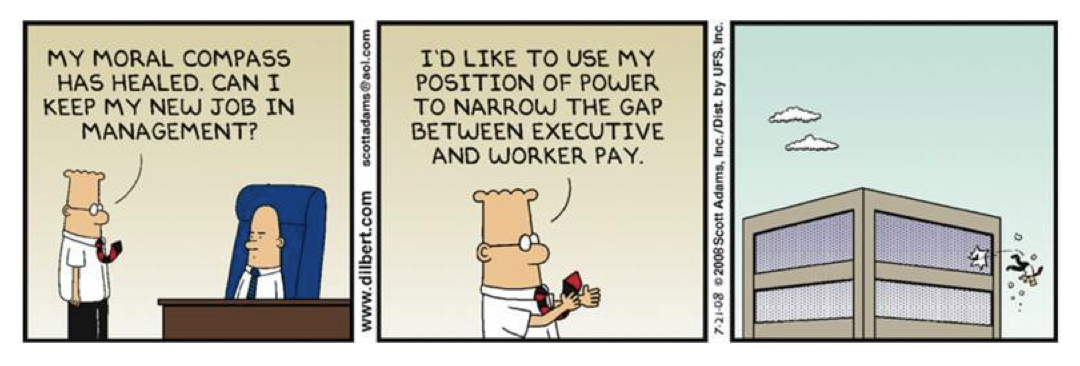Mission Command, Management Gaps and High Flying!
13/11/2018

We’ve blogged about implementing a Mission Command approach to Leadership in the past:
On our travels we’ve heard some people say, “Oh, we’re already doing something like this already (emphasis on already)!”, or “Ah, we don’t want to send any cross-messages with the (re)organisation programme (read Transformation, Change, Cost-cutting … oops) we’re running”.
Well, “something like this” isn’t good enough: There’s one motor manufacturer that makes two types of cars that are “something like” each other, they both have an engine, gearbox, 4 wheels, two doors and a soft-top. BUT one is a Fiat 500 the other is a Ferrari LaFerrari. Fundamentally different in so many ways!
And, Mission Command is not a programme – it’s something to be built into the DNA of an organisation.
So, how effective are we in embedding Mission Command throughout the organisation? Can we measure this effectiveness? We believe we’ve started to build a Measurement Method for establishing just how effective we are in this, and it draws on academic work by Luc Hoebeke who states “One of management’s key tasks is to build coherence in an organisation”. Can we measure “coherence”?
Now Mission Command involves a number of aspects, but one key element is that “Purpose”, or “Central Intent”, must be communicated clearly from the centre out to the front-line. And each manager at any level must implement the, let’s call it, the “two-level rule”. As a manager, I need not only to understand my boss’ Intent, but his/her boss’ intent as well, and so on out to the front-line.
So we’ve blogged about using our Maturity Matrix (used in conjunction with our Readiness Assessment (for change)):
https://blogs.cranfield.ac.uk/leadership-management/cbp/its-for-the-journey
In carrying out the most extensive Readiness Assessment ever to date, we are able to build a picture of where certain categories of employees are on the Maturity Matrix (5 levels across 5 key thematic areas 1. Leadership & Organisation, 2. Understanding Business as a Series of Processes, 3. People & Culture, 4. Continuous Improvement Methods, Techniques and Tools and 5. Diversity & Inclusion). See example below:

Note: only one response from ACC level – means we have to place less emphasis on this result for now.
Without going into too much detail, for thematic 1. Leadership & Organisation, the separation between Superintendent level (those close to the centre) and Constable level (those at the front-line) is around 6 points (and, on the scale on the left of the chart, each level in the Maturity Matrix spans 8 points) – almost one whole level in Maturity difference. Our proposition is that if Mission Command had thoroughly percolated throughout this organisation, there would be close to no difference between the ranks – since Intent would be clear and understood two levels above and below at each level.
There are a series of 10 statements presented for response in each of the 5 themes. It is worth noting that responses to 3 statements were the greatest drivers behind the divergence (note the opposite of convergence) between the centre and the front-line, namely:
- We encourage our people to take ownership of local problems affecting performance
- Senior Managers provide guidance and support for local decision making
- People have to ask senior management for permission to act in this organisation
And one of 3 key statements that drew much agreement about was:
- The organisation is controlled by the experience and opinion of senior managers
So this organisation has some ways to go, we would argue, in order to thoroughly embed and embrace Mission Command. And the way to measure this is to look for a horizontal line joining the centre to the front-line in the chart above, signifying good coherence between the ranks, and to see that line moving up through the levels towards 40 on the scale as they apply various learning/improvement interventions
We have made the mistake in the past of trying to effect change without going through this understanding using the Readiness Assessment. We didn’t quite end up airborne like the unfortunate Dilbert above, but we did feel like we were well and truly jettisoned out of one particular organisation at that time!
Categories & Tags:
Leave a comment on this post:
You might also like…
Automotive Engineering: From student to hypercar innovation at Rimac
We sat down with recent graduate Thomas Perrin, to discuss how his year on the MSc in Automotive Engineering at Cranfield University propelled him from the lecture hall directly into the ...
What this year at Cranfield really meant to me
Every Cranfield journey is unique. In this alumni reflection, Zachea Scicluna shares what her year at Cranfield truly meant, from facing uncertainty to gaining hands-on experience in industry-backed projects. I’ve been reflecting (and delaying) ...
Preparing for assignments and exams?
Sorry! We know it seems a bit mean to mention the exams in January rather than looking forward to the break before it! However, we know many of you will be thinking about your forthcoming ...
Screening for FTSE 100 companies on Bloomberg
So you’re researching an index and need some data on its constituent companies? Bloomberg’s Equity Screening tool makes light work of this, not just for the FTSE, but for indices, exchanges and sectors worldwide. Type EQS ...
Accelerating my future: How Cranfield put me on the fast track to automotive safety innovation
Hello! I’m Michaela Kaiser, and I’m thrilled to share my journey studying abroad. I’m from Calgary, Canada, and I recently graduated from Cranfield’s MSc Automotive Engineering course. My path to Cranfield ...
From Myanmar to Cranfield: My path to Renewable Energy
As someone who is passionate about sustainability, my career goal is to build a path in the renewable energy sector. My aspirations comes from the benefits of developing sustainable energy sources and ensuring energy ...






